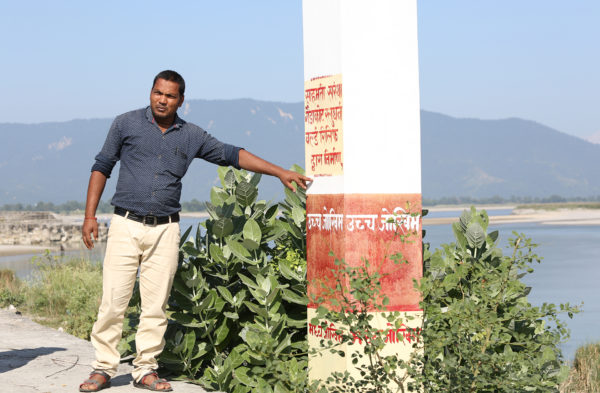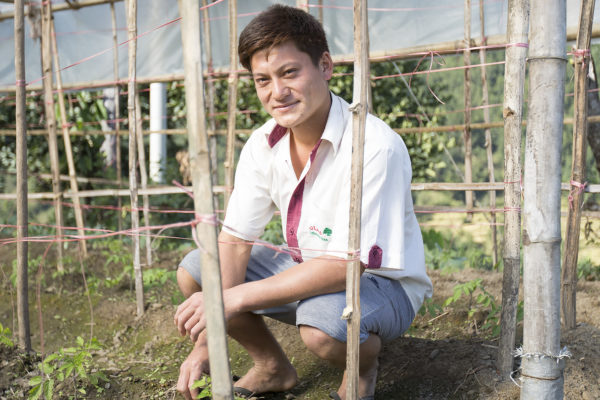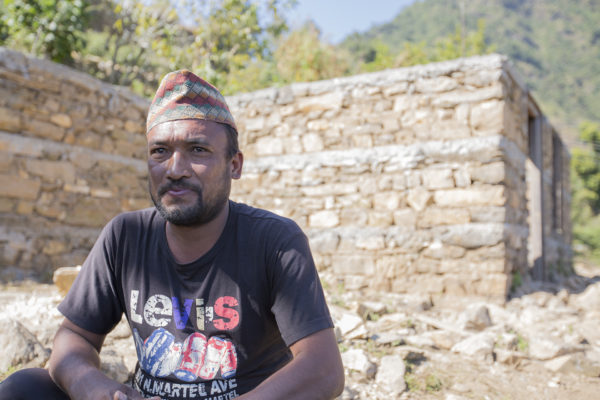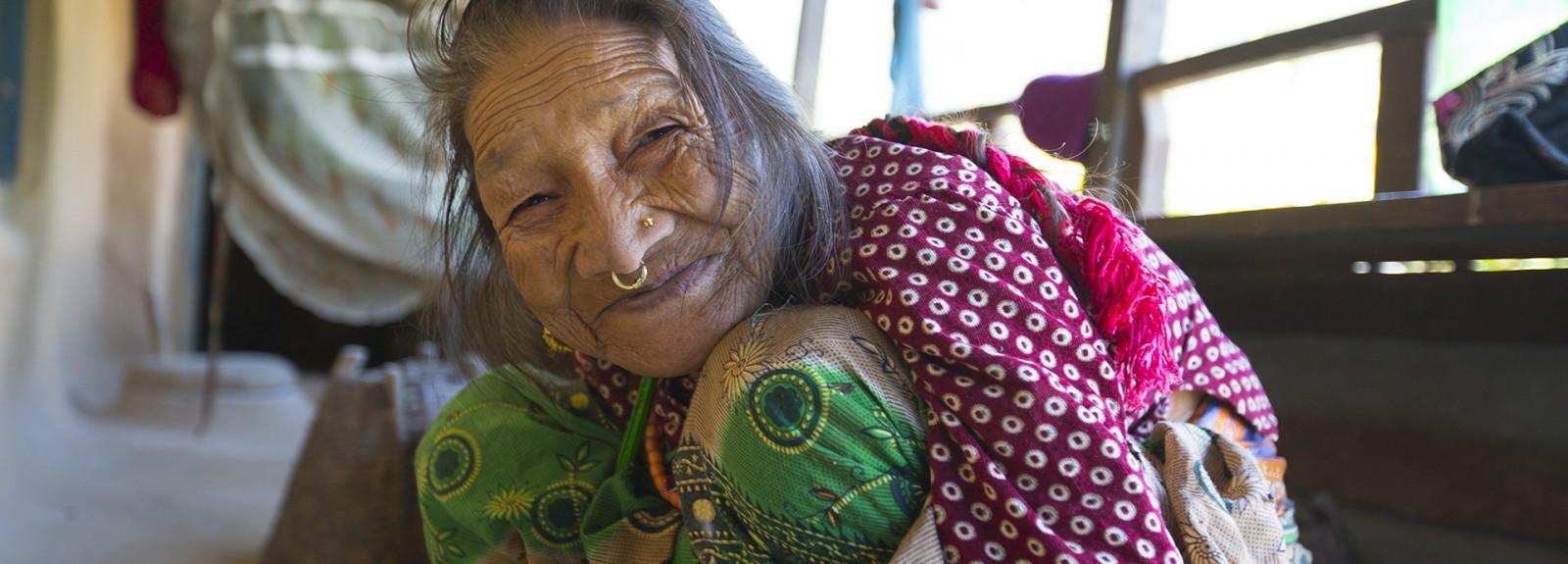Last month, I was part of a group which visited a few of Lutheran World Relief’s projects in Nepal, to see first-hand how your gifts are having a positive impact on people in some of the country’s most remote locations.
We traveled by boat to visit the community of Susta, located on the India-Nepal border. We were able to see how the Water Window project is saving lives and property by cutting the time it takes to notify communities of impending flood waters. Next, we traveled by car and on foot to visit families in Gorkha, a district hit particularly hard by the 2015 earthquakes. LWR has been helping in the district by providing seeds and livestock, as well as training on agricultural best practices. Many community members have also received training on the construction of earthquake-resistant housing as they continue to rebuild their homes.
Here are just a few of the people I met on my trip.
Ram Kisun Koiri

Ram is the president of the CDMC (Community Disaster Management Committee). In this picture, he is showing us the flood gauge at the banks of the Narayni River. If water comes into the yellow zone, the committee keeps a close eye on developing conditions. If the water reaches the red zone, they warn people to evacuate because a flood is coming. With this year’s floods, the water came up above the red zone, so even before the water reached the community they knew this flood was going to be a bad one.
They evacuated about 6,000 people. The floods were after three days of non-stop heavy rains. There were no human casualties from this year’s flood.
Jantri Kebat

Jantri is a banana farmer in the Narayani River basin. He started growing bananas two years ago, thanks to the project. He used to be a police officer, for seven years, but quit during the Maoist insurgency when the work became too dangerous. He wasn’t sure what he wanted to do next, and heard about the farming training being offered. He’d been considering going overseas as an unskilled laborer, and farming would allow him to stay home with his family.
He started with small-scale vegetable farming, then became interested in banana cultivation, and finally learned to be a trainer so he can help others on the path. “I’m right where I want to be,” Jantri told us. He and his wife have seven daughters and a son, ages 5-18. “I’m very happy with my income,” he continued.
Jantri hoped to earn three million Nepalese rupees (about $30,000 USD) this year, but he lost half of his crop in the flood and ended up earning far less. “I’m proud that farmers from distant villages come to learn from me. I’m earning a good profit and I’m able to stay with my family,” Jantri said. He’s proud that people who have been farmers much longer than he has now seek his advice. “You have taught me a lot, and I will be very happy to continue learning.”
Budhmaya (Gurung)

On the day of the earthquake, Budhmaya and her husband, Lal, were working on their farm. Thankfully, heir house was badly damaged, but not completely destroyed. While their crops fared fine, the family lost their stored grain.
Through the LWR project, they received CGI sheeting and cash, which they used to build temporary shelter until their home was repaired. They also received agricultural training, seeds, and a goat, along with training on raising and selling it. Now the family owns two male goats and plans to send one to breed in their community and the other to a neighboring community. The family earns income from breeding the male goats.
In addition, the family grows orange and lemon saplings, which Lal planted using the improved seeds and other supplies he got through the project. Other farmers visit him to learn from what he is doing and feel encouragement that they can also have similar success. “We used to have no income, and grew only millet. Now I have a bank balance, and I eat organic vegetables and have a good income. I feel more energetic and healthy.”
Santosh Gurung

Santosh has been married six years and has a son. His wife and son were in Kathmandu at the time of the earthquake, around noon that day. Because phones were jammed, he didn't know whether they were safe until about 9 p.m.
After the quake, Santosh and his family received emergency food support and transitional shelter items, to which he contributed additional items. To help him get back to farming, he received tools and plastic tunneling and training on caring for his goats.
Though he admits his family has a long way to go until they are fully recovered, Santosh is extremely hopeful.
“Though the earthquake has destroyed a lot, I got a new hope and a new vision from people like you and organizations like yours," he said. "We never knew we could cultivate vegetables this way and earn this much money. Since I started earning good money from vegetable farming, I now want to get long-term training to adapt to new technology and grow more vegetables. I am thankful that you [LWR] are here.”
Purna Bahadur Biswo Karma

Purna is another mason trained by LWR. He lost his house and six months worth of stored grain in the earthquake but was relieved that his family (wife and 4 children) were safe. Even though he is a mason, it’s taking longer for him to rebuild his own house because he’s been so busy helping to rebuild homes for other families. He also received goats and agriculture training through the project, and the male goat he received for breeding has fathered 150 kids! He earns 100 rupees (about $1) per breeding session.
Thank you!
Our work in Nepal, and around the world, is made possible by generous donors like you. Thank you!
Please take a moment to make a year-end gift so that LWR can start 2018 strong, helping even more communities living in poverty around the world.


